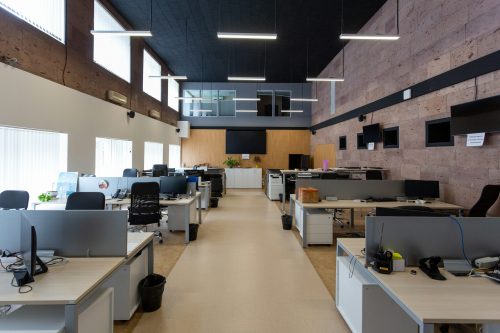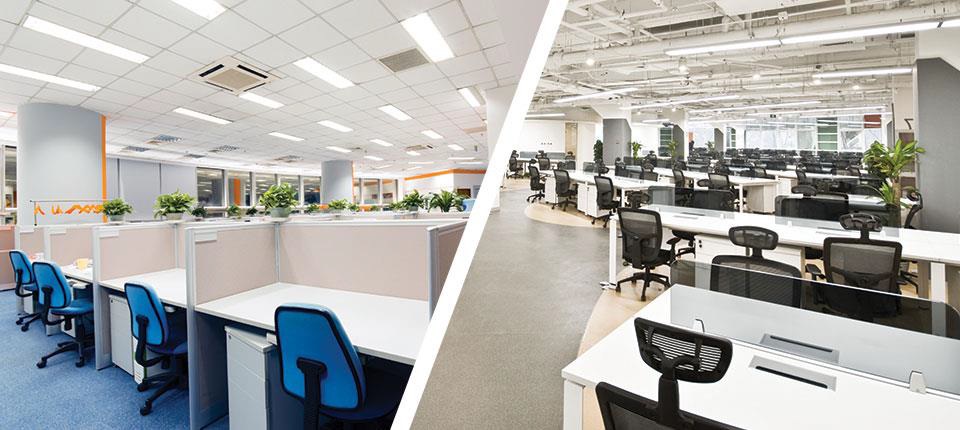June 17th 2024
In the world of business, choosing the right office space is crucial for success. Business owners often need to weigh the pros and cons of traditional offices versus serviced offices. Each setup comes with its own set of benefits and considerations, making it essential for decision-makers to thoroughly assess their needs and options.
Today, we’re going to explore the differences between traditional office spaces and serviced offices, aiming to give you a clear view of how each office type works, from cost and flexibility to availability and location.
1. Traditional Offices vs. Serviced Offices: What’s the Difference?
Traditional offices have long been the cornerstone of businesses. These spaces are typically long-term leases with a focus on customization and control. Companies that opt for traditional offices have the freedom to design the space to their exact specifications, fostering a strong brand identity and culture.
However, this level of customization comes with higher upfront costs and ongoing maintenance responsibilities. From forking out for furnishings to utilities and cleaning services, the onus falls on the business to manage and maintain the workspace.
On the other hand, serviced offices offer a more flexible and convenient alternative. These spaces are fully equipped with furniture, high-speed internet, reception services, and communal areas. Serviced offices also provide access to meeting rooms, administrative support, and all-inclusive pricing, simplifying budgeting and oversight. While this does sound incredibly convenient on the surface, there are a few things to look out for when looking for serviced offices, so make sure you read our guide before starting your search.
The serviced office approach allows businesses to move in and start working immediately, minimizing downtime and operational disruptions. Moreover, the flexibility of serviced offices enables businesses to easily upscale or downscale their space as needed, adapting to evolving demands without being tied down by lengthy leases.

2. Cost Comparison
When it comes to cost, traditional offices often require a significant upfront investment in infrastructure and furnishings, as well as long-term lease commitments of up to 10 years. Businesses must also factor in ongoing expenses for utilities, maintenance, and repairs. Naturally, these costs can fluctuate as the space is used more or less often each month. A conventional office will typically see you paying per-square-foot each month for the space, which means monthly costs can vary drastically depending on the size of your company and the space you require.
In contrast, serviced offices operate on a pay-as-you-use model, bundling all costs into a single monthly fee. For smaller companies and start-ups, serviced offices are incredibly efficient, where you’ll be paying anywhere from £300 – £1,000 per workstation per month, but with no added headaches about bills and utilities – they by far outweigh traditional offices when it comes to convenience.
From purely a cost perspective, we’d say that serviced offices are the way to go for ease of mind, especially if you’re looking to reduce your overall office spend.

3. Amenities and Services
The fundamental needs of your business play a big role in making the decision between a traditional office or a serviced office. It all comes down to what you’ll be using on a day-to-day basis.
Traditional office setups offer complete autonomy in selecting and managing amenities, but this also means shouldering the responsibility of sourcing and coordinating these services. The more services you need, the more you’ll be paying, and it’s on a case-by-case basis, too, meaning overall costs can get out of hand rather quickly.
Serviced offices, however, come fully equipped with access to a range of amenities, from kitchens and breakout areas to professional reception services, creating a seamless and productive environment for businesses to thrive. When looking for a serviced office, it’s best to pull together a list of all the amenities you’ll be needing access to, and then doing a thorough search for any spaces that meet all (or most) of your requirements.

4. Flexibility and Scalability
Traditional offices have long been the standard for business operations, offering a sense of permanence and stability. One of the key advantages of a traditional office is the ability to customize the space to suit specific business needs, which enables companies to create a branded environment that aligns with their corporate identity and company culture. Traditional offices provide a solid foundation for long-term growth, allowing businesses to expand and evolve within a fixed location. The permanent nature of a traditional office space can foster a strong sense of community and identity among employees, too.
Serviced offices, however, present a compelling alternative to traditional office spaces, offering a level of flexibility that’s highly attractive to fast-moving modern businesses. Unlike traditional offices, serviced offices provide you with the ability to upscale your office space, or even downscale if needed, allowing for cost-effective adjustments on the fly to suit your evolving space requirements. This, along with the option of short-term or rolling contracts, means that businesses don’t have to embed their roots too deep into one location, if the sky truly is the limit.

5. Maintenance and Management
Traditional offices require extensive responsibility for maintenance, repairs, and overall management. Companies that operate from traditional office spaces must allocate resources and time towards these tasks. From fixing leaky pipes to managing the heating or air conditioning systems, the burden falls on you as a company to ensure the space is in optimal condition for your employees. Additionally, ongoing cleaning and waste management are also essential, demanding the attention of either staff or external service providers.
Serviced offices, on the other hand, provide a solution in which the provider of the space takes on these responsibilities instead. This means that you can focus on your primary business goals, and don’t have to waste precious time.

6. Location and Prestige
The location of your office can significantly impact your business’ operations and success. Traditional offices often require careful consideration of which area they enter into, and how the office address can impact brand perception. There’s something to be said about a company that occupies the same location for many years, as it can build trust with the community over time. Modern business, however, seems to be increasing in pace, as business owners are happier to move on to bigger and brighter spaces in bigger cities, as they chase success.
Serviced offices, with their ever-growing presence in prime business districts and established office centres, offer immediate access to sought-after locations without the constraints of the long-term commitments we’ve discussed already. In recent years, there’s been a boom in the popularity of serviced offices, meaning that securing a space for your business in prestigious areas of the country is now actually easier than ever.

In today’s fast-moving business world, you as a business owner need to decide whether the permanency and customisability of a traditional offices speaks to you, or whether you want to remove the headaches of bills and extra costs and go with the more straightforward and easier to understand serviced office.
No matter which option you end up choosing, we hope we’ve given you enough food for thought when planning your next office move.
Why not get started right now, and head over and browse our selection of serviced offices around the UK and Ireland? Use our free office search tool to get the ball rolling today!
